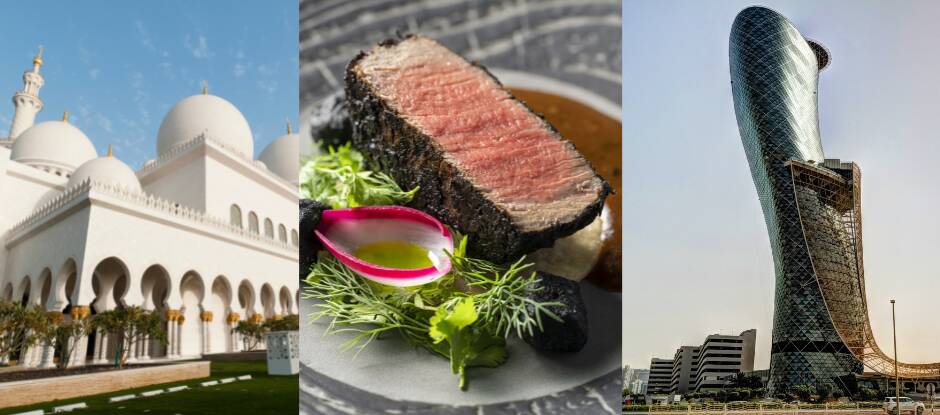From humble origins, the UAE has evolved into a kaleidoscope of colour and culture which combine to produce a cosmopolitan megatropolis that finds few rivals in the modern world. From Abu Dhabi’s earthy stews and coffees brewed in ritualistic homage to its Bedouin beginnings to the glitz of dining at the highest point in the world, here’s 50 things you should know about the UAE’s culinary and cultural emergence onto the world stage
1. There are 7 of them…
Emirates, that is. The United Arab Emirates – the country – comprises seven emirates, or city-states: Abu Dhabi (the capital), Dubai, Sharjah, Ajman, Ras Al Khaimah, Fujairah and Umm Al Quwain.
2. A Trucial Question
Before the UAE became the United Arab Emirates, it was known as the Trucial States, which was essentially a collection of sheikhdoms whose origins can be traced back to the ways of the wayfaring Bedouin tribes.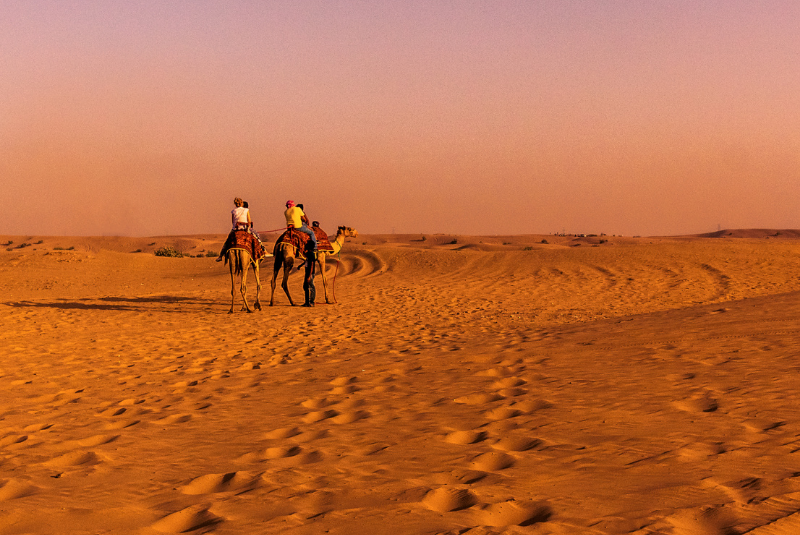
The Bedouin tribes, who lived in the Trucial States (before the region became the UAE), often travelled across the desert on camels
3. Father of gazelles
The name of the capital city, Abu Dhabi, means ‘father of gazelles’ – Abu (father) Dhabi (gazelle). It’s an epithet that tells the city’s origin story. According to Emirati legend, the first settlers in Abu Dhabi – the Bani Yas tribe – were led to a spring of water by a herd of gazelle they had been stalking. It was around this same spring of water that the great city of Abu Dhabi has sprung.
4. It just turned 50
The UAE was unified by the late Sheikh Zayed (revered by Emiratis as the visionary Founding Father) in 1971. Since then, the small-but-mighty Gulf state has built the world’s tallest building (more on that in a bit) and became the first Arab state to send a satellite to Mars (more on that, too). Not bad for half-a-century’s graft.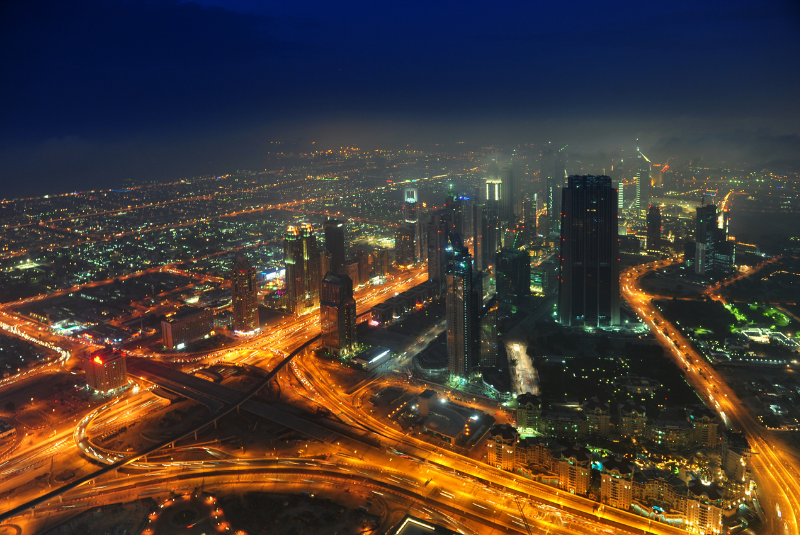
The Sheik Zayed Road, named after the 'Founding Father' of the United Arab Emirates
5. The vagabond’s diet
The early Bedouins who roamed these undulating desertscapes were expert hunters and fishermen who made staples from what was readily available. From an abundance of goats and lambs they made hearty, slow-cooked stews, and from its coastal freshwaters they caught grouper and kingfish. Today’s Emirati cuisine invokes these ancient roots.
6. Culinary greatest hits
Some Emirati favourites, though not an exhaustive list, include: Harees, porridge-like dish that mixes lamb or chicken with wheat, served with local ghee. Machboos, mildly spiced-chicken and yellow rice served with daqoos – a spicy tomato sauce. Thereed, a lamb, marrow and vegetable stew. Madrooba, a mix of salt-cured fish cooked in a clay pot with spices. Aish wa laham, which is simply lamb cooked ‘the traditional way’. And laquimat, sweet little donut balls.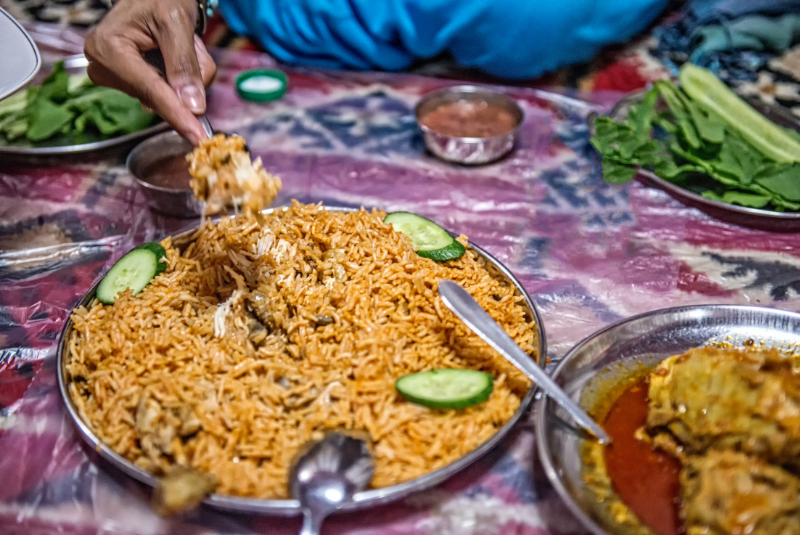
A signature Emirati dish of machboos, with mildly spiced chicken on yellow rice
7. Eating is about people
The predominant style of Emirati cooking is slow-cooked stews and all-in-one dishes which, in the days of the Bedouin, would bubble away for hours in clay pots over the embers of wood fires. Its gastronomy is fixed to a purpose: to bring people around the same table; to spur conversation; to discuss the local issues of the day; to iron-out family matters. This is the meaning of the word fowala – a way of setting up a meal with people sat around it.
8. In search of a national dish
There is no definitive national plate of the UAE. Any attempt to reduce Emirati cuisine to just one dish would meet with challenges aplenty due to the various influences at play, although if you’re looking for a true taste of the nation, ordering a plate of harees or machboos is a good place to start. To learn more about the idiosyncrasies and history of local dining (including the heritage of harees and machboos) check out our Eat Like an Emirati feature.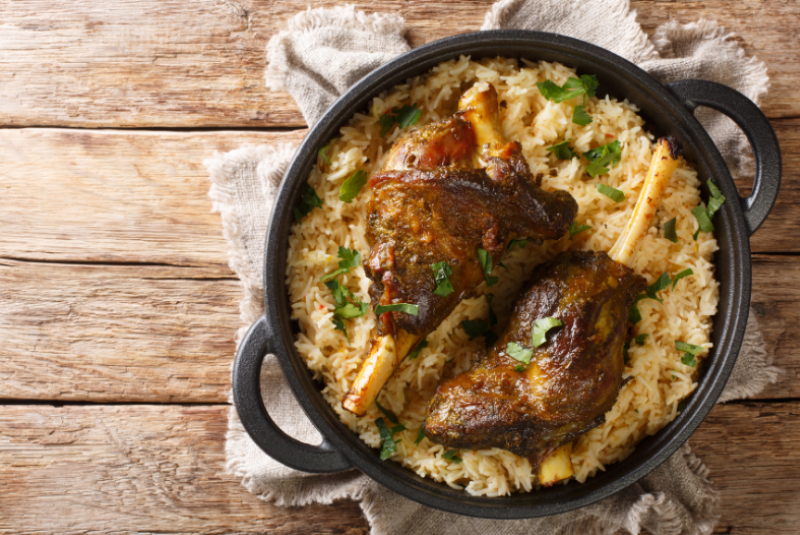
A dish of hannedh, slow-roasted lamb stew on a bed of rice
9. You are where you eat
Rather than one specific dish, it’s better to talk about a national cuisine. Speaking in general terms, meaty stews such as harees and thereed are found in the central areas, while fish dishes such as madrooba are eaten along the coastal regions of the northern emirates.
10. A culture of accessibility
Known in business circles as the ‘crossroads of the world’, the UAE continues to attract expats from every corner of the planet, thanks to the lucrative, fast-track employment opportunities on offer. So much so that today, more than 200 nationalities call the UAE home. Expats today comprise more than 88% of its 9.9 million population.
11. World’s busiest airport
Pre-covid, Dubai International Airport was ranked the world’s busiest airport four years running. At the end of 2018, more than 88 million travellers came through the emirate – that’s almost 10 times its population. By 2050, the main airport has plans to handle a staggering 220 million passengers a year.
12. Eating on the roof of the world
Tourists to the UAE can claim an oddly satisfying humble brag: “I’ve eaten at the top of the world”. By booking into Atmosphere, the floor-to-ceiling glass restaurant perched on floor 122 of the 828-metre Burj Khalifa (the world’s tallest building), they can lay claim to sampling the world’s loftiest restaurant. It’s literally the height of dining.
13. Defer to your right
Centuries-old Bedouin tradition dictated that during a majlis (council gathering) or meeting, guests were seated in order of tribal rank or superiority, immediately to the right of the son of gahwa – the coffee maker, and son of the host. That way the elders would be served their coffee first, at its hottest and freshest. This to-the-right custom endures today. Across the UAE, it is common etiquette to defer to the person on your right. In practice now, that could be letting the person on your right out of the lift, or through a door first.
14. Everything starts with a cup
And speaking of coffee… Gahwa Coffee (pronounced Gow-wah), though it is considered a pan-Arabic style of coffee, is inherent to Emirati culture. Brewed and served in a dallah (coffee pot) it boils together ground, dry roasted coffee beans, cardamom pods and pinch of saffron. Best served with a fat, juicy date.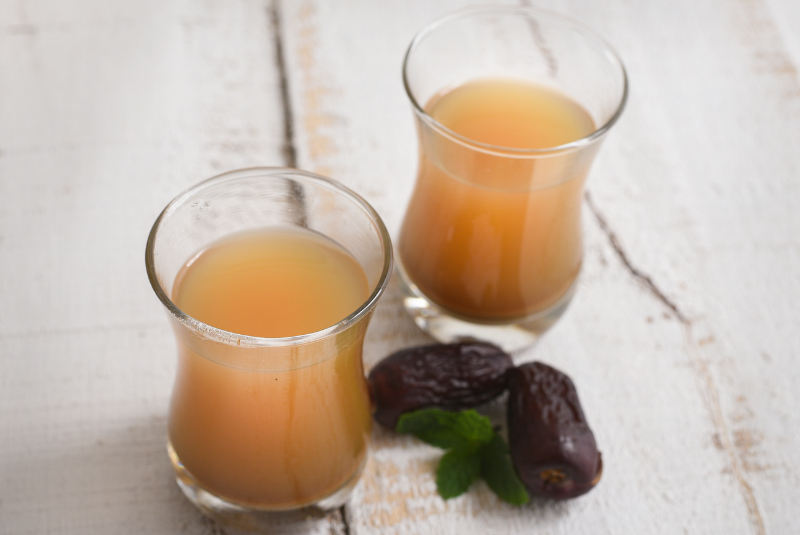
Gahwa coffee, made with dry roasted coffee beans, cardamom pods and pinch of saffron
15. How to stop the coffee fountain
If you find yourself at a meeting in the UAE, coffee will be offered by service staff in a golden dallah. Now, because the taking of coffee is a tradition born from a communal opportunity to talk about important political matters, there is a silent way of communicating that is observed in formal settings. If you don’t want any more, you must shake your coffee cup (fenjan) side-to-side to indicate that you don’t want anymore. If you fail do this, your cup will continue being refilled until the caffeine shakes have taken hold and do the job for you.
If you don’t want any coffee in the first instance, the respectful way to say, “no, thank you” is to place your hand over your chest and slightly bow your head. This sign language was originally devised because the coffee server, the son of the host, was made to stuff cotton wool in his ears so he couldn’t overhear the politics of the tribe and spread dangerous rumours he had misheard.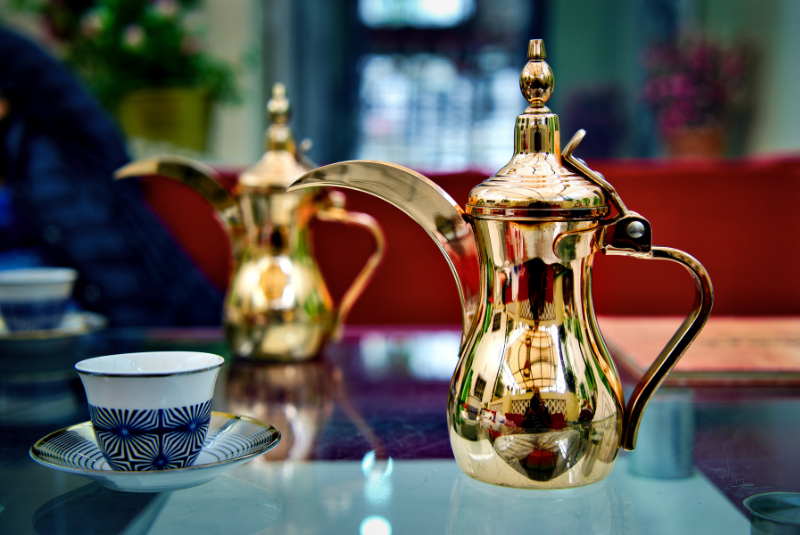
A golden dallah, traditionally used to serve coffee during meetings in the United Arab Emirates
16. Crude approach
Since the first oil was discovered in Abu Dhabi in 1958, black gold has dominated the economy and built its considerable wealth, as it became one of the world’s top 10 oil exporters.
17. It is aggressively diversifying its economic and energy mix
In 2011, the oil and gas sector comprised over 75% of the UAE’s GDP. Today, it makes up just over 30%. Despite being the heartland of the hydrocarbon economy, Abu Dhabi leaders are pursuing a transformational energy and economic diversification strategy. They aim to generate 50% of its total energy mix from renewable sources like solar and green hydrogen by 2050.
18. Solar is the future
Solar power will be the UAE’s energy x-factor. Through a combination of solar projects in Abu Dhabi, Dubai and the Northern Emirates, the UAE is shooting towards a total capacity of 9 gigawatts (GW) of renewable energy by 2025. To put that number into context, the UK (which has four times the land mass of the UAE) plans to have 14GW of solar energy online in the same timeframe.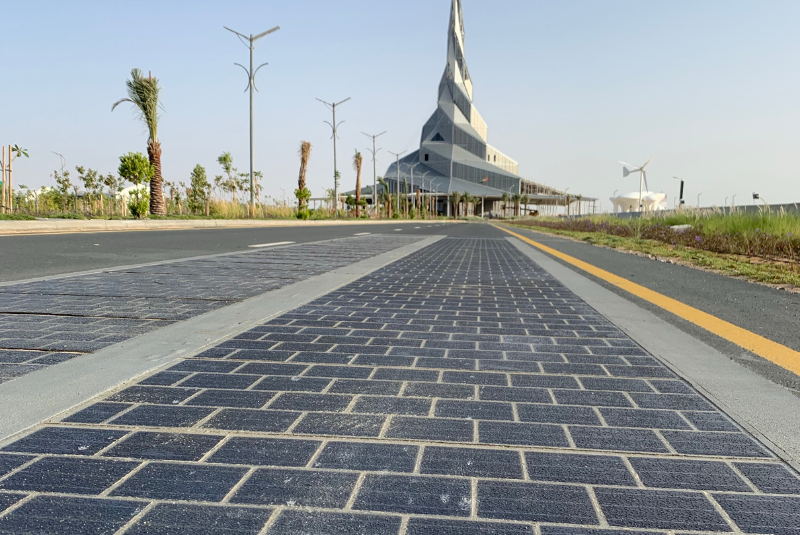
Solar energy is becoming a staple of UAE power
19. The UAE’s shallow coastal waters are perfect for pearls
Though the Arabian Sea that runs along the UAE’s coastline only reaches 300m deep, the undersea beds are a perfect breeding ground for milky pearls with their faint pink flush. From as early as the 1700s, divers with nothing more than a nose clip, a bag and a rock tied to one foot would plunge and scoop myriad gorgeous oysters whose nacre produced some of the world’s finest pearls.
20. Before oil, it was a pearling economy
By 1900, exported pearls made up 95% of the Gulf’s economy, which was supported by more than 1,200 boats. Up to a quarter of those boats sailed from what are now Dubai and Sharjah. Such was the rip-roaring trade done by the lead pearlers in the late 1880s, they grew wealthier even than the ruling Sheikhs, as fashionistas in Paris and maharajahs in India demanded the finest pearls for their ears, necks and fingers.
21. Oysters are thriving
Though the pearling industry is not the business it once was, the practice of oyster farming is well and truly alive just off the coast of the northern emirate of Fujairah. Every month, up to 300,000 luscious, meaty Pacific-cupped oysters are being sustainably farmed by Dibba Bay Oysters.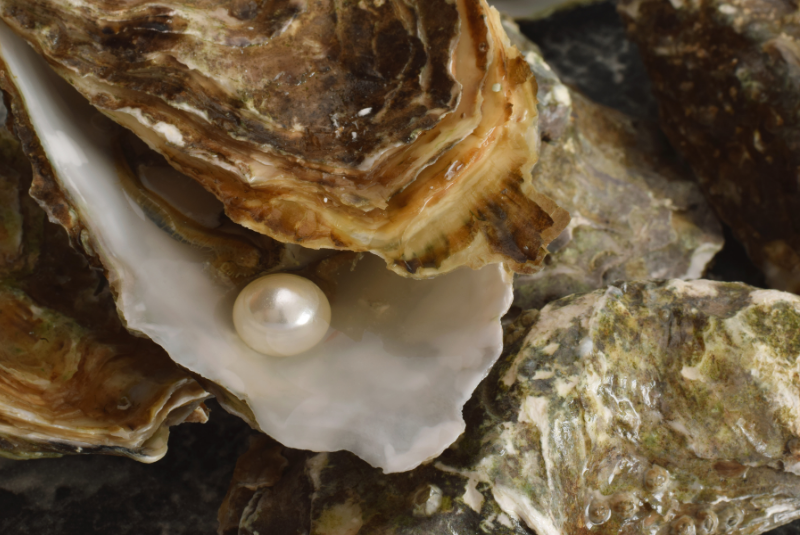
Oyster farming and pearling is prominent off the coast of the northern emirate of Fujairah
22. The clean water is the secret to bulging bivalves
With Dibba Bay located in open water at the fringes of the Indian Ocean, the nutrient-rich currents supply the algae and calcium they need to grow up to 30% meatier than their nacreous competitors in other waters. And because oysters thrive in warm waters, the UAE’s year-round summer climate means they grow up to 10 times faster than other farms around the world.
23. Queen Elizabeth 2 is happily retired here
Oysters and pearls are not the only things living their best life on the waters of the UAE. The world-famous ocean liner Queen Elizabeth 2 is now permanently docked at Port Rashid, serving as a unique entertainment, dining and hospitality experience, replete with 215-rooms and suites.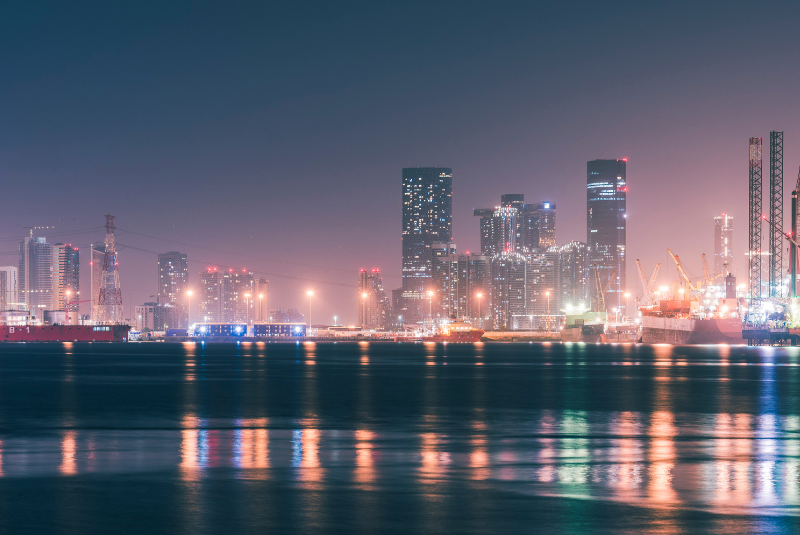
The Queen Elizabeth 2 is now docked at Port Rashid in the UAE
24. Pakistan’s sporting home from home
Since 2009, the Pakistan men’s cricket team have played their home Test matches and hosted One Day International (ODI) series in the UAE at the Zayed Cricket Stadium in Abu Dhabi, the Dubai International Cricket Stadium and the Sharjah Cricket Stadium.
25. When India plays Pakistan, the UAE comes to a standstill
Pakistani expats comprise most of the taxi drivers in the UAE. In April 2006 (before the days of Uber) the UAE hosted a two-match ODI series between rivals India and Pakistan – and there were almost no taxis on the road. It happened again when the sides met in 2018. And again when they met at the T20 World Cup in October 2021.
26. Hammour, the UAE’s favoured fish
The grouper fish known as hammour has long been the UAE’s catch of the day. In 2015, researchers from the New York University in Abu Dhabi discovered that the hammour is in fact three different species of fish masquerading as one. The best way to eat freshly caught hammour is at one of the local fish markets, where restaurants whisk your pick straight from the ice bucket onto a charcoal grill. It’s ideally served with a garlic parsley butter, a twist of saffron and a few spritzes of lemon.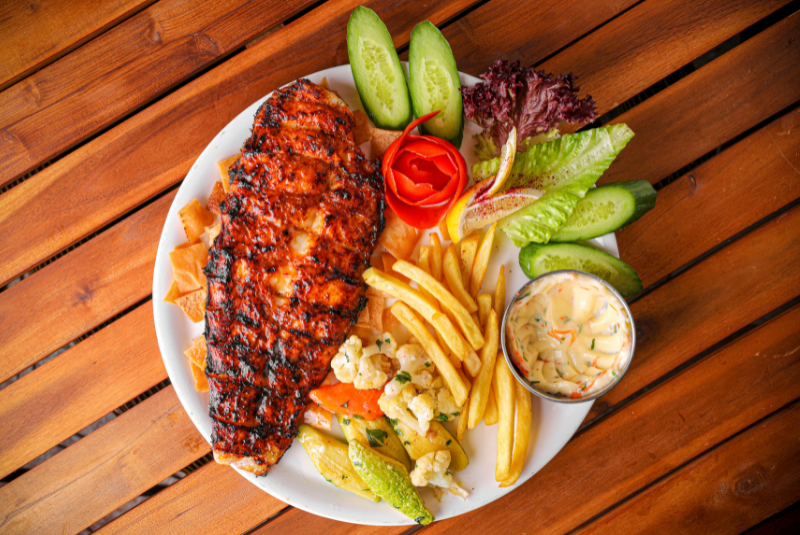
Charcoal-roasted hammour served with a garlic parsley butter
27. The taste of trade
As a historic hub for traders from the Middle East, Egypt, Iran and India, spices such as cinnamon, turmeric, cardamom, saffron and cumin now feature as mainstays in classic Emirati dishes – and indeed in its coffee.
28. Slurp on a 24-carat gold cup of joe
You can also get the world’s only coffee laced with gold – actual gold – in the UAE. At the lavish $3.4bn-plus Emirates Palace Hotel in Abu Dhabi, they serve up their signature gold-leaf cappuccino. It will set you back around AED80 ($22).
29. Lean back… to see the awesome architecture
While the UAE ranks fourth in the world for the number of skyscrapers that breach the 200m threshold (it has 95), it’s the form of these mind-bending, neck-arching structures that is truly awesome. Perhaps the epitome of this is Abu Dhabi's Capital Gate, which holds the beautifully bizarre label of ‘the world's most leaning tower’. Slanting out 18 degrees, it’s four times more angular than the leaning tower of Pisa.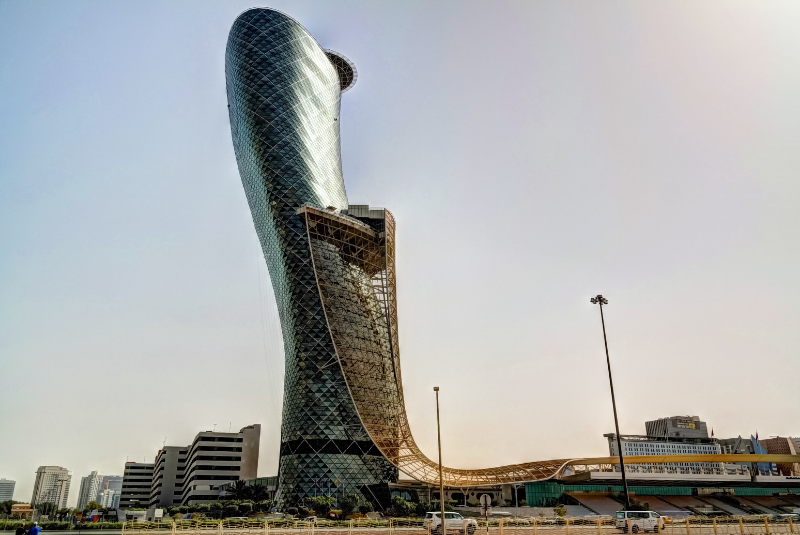
Abu Dhabi's Capital Gate leans four times more than the Leaning Tower of Pisa
30. Always take the UAE’s weather with you…
If you like it hot, that is. In the summer months temperatures in the UAE reach an average 40C. Yes, average. The highest ever recorded came in 2017, when mercury climbed to 51.8C in Abu Dhabi. Mind you, it can come all the way down to 20C in winter, perfect for a brisk break.
31. The F1 decider
Since 2009, Abu Dhabi has hosted the Formula One Grand Prix season finale at the Hermann Tilke-designed Yas Marina Circuit. At the end of 2021, it provided the stage for that unforgettable climax between Verstappen and Hamilton.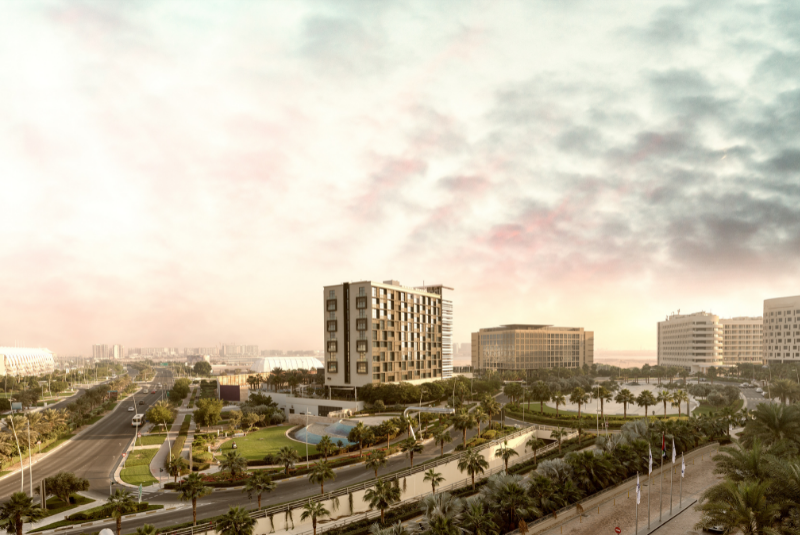
The Yas Marina Circuit in Abu Dhabi, where the Formula One Grand Prix takes place
32. And the police drive Lambos
While we’re on the topic of fast cars… you shouldn’t be surprised to see a Lamborghini Aventador or a Bugatti Veyron decked out the green and white local police livery zipping through traffic. UAE Police have an astonishing collection of supercars on the roads.
33. Local sports: camel racing
But if an altogether humbler pace of race is your kind of thing, there’s camel sport. Between November and April, a regular calendar of camel races is held across the country at high-tech camel racing stadiums, from Al Wathba in Abu Dhabi to the Dubai Camel Racing Club.
34. Camels aren’t just for Christmas… and racing
Camels are beautiful, as Emiratis will tell you. So beautiful in fact, they host a multimillion-dollar camel beauty pageant every December to determine who is the most delectable dromedary in the land. Roughly 20,000 camels are put forward by their owners into the Al Dhafra Festival, which can be found about 150km south-west of Abu Dhabi, in a part of the desert known as the Empty Quarter. Performance-enhancers are strictly forbidden: in 2020, several pageant entrants were disqualified for the use of botox after a stewards' enquiry.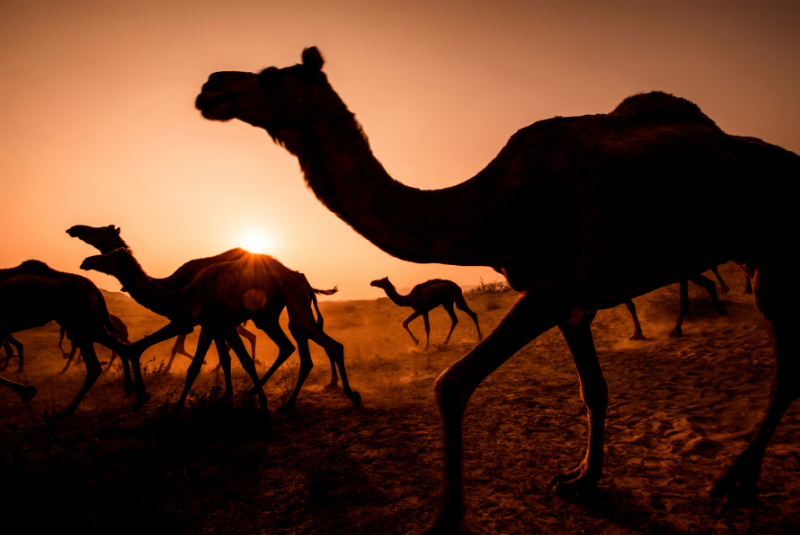
Camel racing and pageants are popular sports across the UAE
35. A poetic people
Emiratis practice an age-old form of poetry called Nabati, which is considered the richest form of popular literature in the UAE. A feature of life in the Arabian Peninsula since the 14th century, it uses colloquial Arabic and favours a direct, simple approach rather than the formal, florid style of classical Arabic poetry. Today, the UAE televises nationwide Nabati competitions on Abu Dhabi TV to an audience of millions.
36. Sport of the skies
Another tradition steeped in Emirati culture is falconry. It is written that for more than 4,000 years, Bedouin in the Arabian Peninsula practiced falconry as a form of hunting for food. Today, it is known as ‘the sport of the skies’.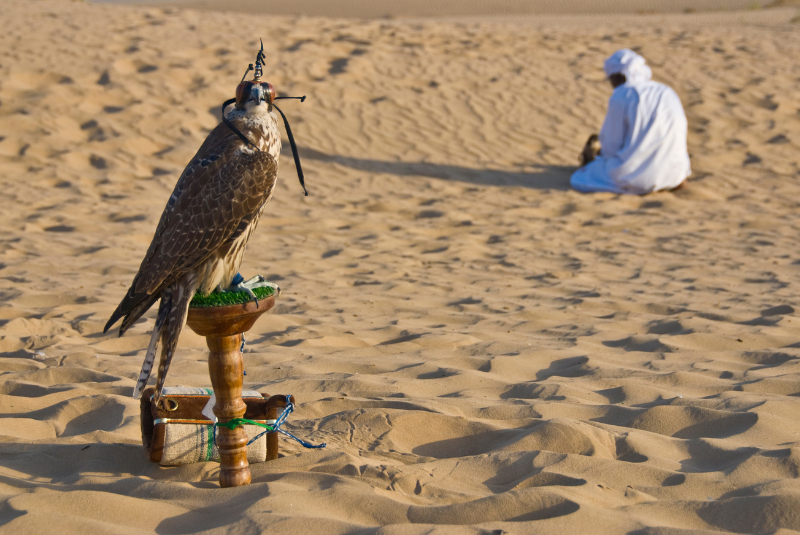
The UAE's 4000-year old affiliation with falcons resulted in it being the national emblem, with seven tail feathers representing each emirate
37. The Falcon Nation
This millennia-old affiliation with the falcon gives the UAE its national emblem – the falcon, or the Hawk of Quraish. It can be seen on any national emblem, with seven tail feathers representing the seven emirates of the UAE.
38. Hosting the Pope
In February 2019, the UAE became the first country in the Arabian Peninsula to host a papal mass. During an historic visit to Abu Dhabi, Pope Francis delivered a live mass at the Abu Dhabi Zayed Sports Stadium, where more than 130,000 Catholics flocked to witness the event in-person, with millions more watching on TVs around the world.
39. A truly Grand Mosque
The Sheikh Zayed Grand Mosque in Abu Dhabi is, like so many structures in the UAE, a staggering feat of architecture. Covering 12 hectares, it’s the world’s third largest mosque, and is capable of hosting more than 41,000 worshippers. It also houses the world’s largest hand-knitted carpet. It took 1,200 workers 10 months to design, assemble and complete the 5,700-metre supersized rug.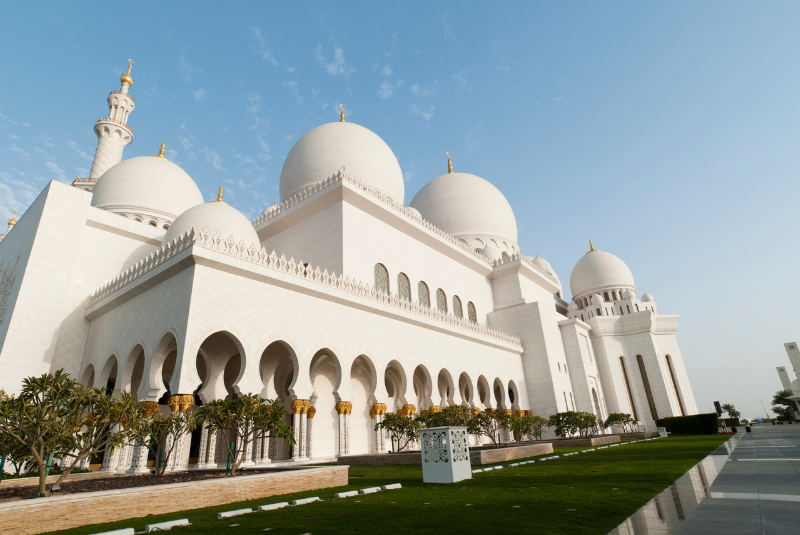
The Sheik Zayed Grand Mosque is the world's third largest, covering 12 hectares
40. You can ski in the mall
You might not think you’d need skis and salopettes for this desert-dwelling Gulf state, but you’d be wrong. Dubai’s Mall of the Emirates features a 1.5-kilometre-long ski slope, replete with penguins (at Christmas) and actual-but-artificial snow.
41. Shopping with sharks
Just north of the Mall of the Emirates along Sheikh Zayed Road, you’ll find the rather enormous 3.77 million square foot Dubai Mall. What to do with all that space? Well, for starters, it has the world’s biggest indoor aquarium, where visitors can gawk at more than 33,000 aquatic animals from black tip sharks to batfish.
42. The world’s most expensive cocktail
The rather obviously named 27,321 was, in 2011, the world’s most expensive cocktail. Served at the Skyview Bar on the 27th floor of the Burj Al Arab, it would have cost you… DHS27,321 – hence the name. That’s about $6,300 . The eye-wateringly priced drink itself was a Macallan 55-year-old single malt served over ice cubes made of water from the Macallan distillery in Scotland, which was then presented in an 18-karat gold glass, which the customer gets to keep.
43. They’ve gone to Mars
In February 2021, the UAE became the first Arab nation, and fifth in the world, to successfully launch a satellite to Mars, as the ‘Hope Probe’ entered the Martian orbit, 204 days and 480 million kilometers after leaving Earth.
44. Green lungs
Covering more than 150sq km of the UAE’s coastline, mangroves are critical to the UAE’s natural ecology. They provide a seasonal home for flamingoes, herons and a litany of local crustacea. The Ministry of Environment and Climate Change pledged, at Cop26 in Glasgow last year, to plant a further 100 million mangroves to provide a greater carbon capture sink as the country looks to become more sustainable.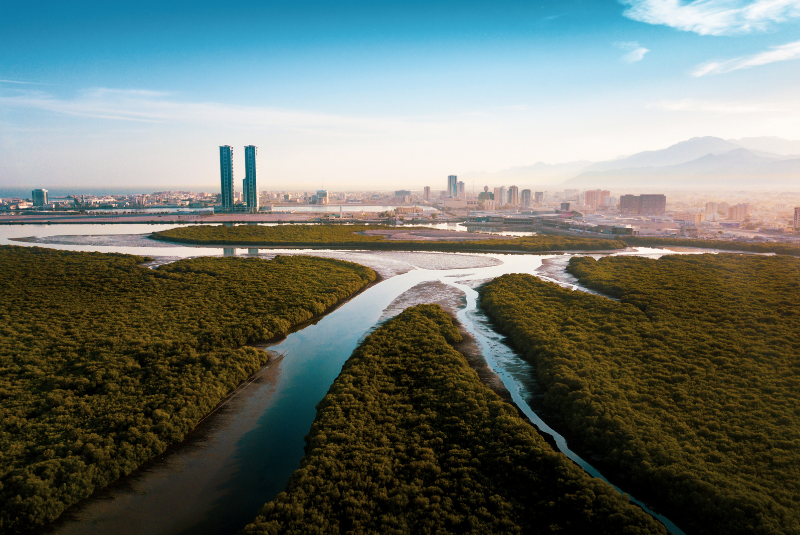
The mangrove forest in Ras al Khaimah, UAE
45. It’s Monday to Friday
As of 3 January 2022, the UAE shifted its working week to Monday – Friday to better align with global markets from East to West. Previously, weekends had fallen on Fridays and Saturdays.
46. Sharjah’s got the blues
Sharjah’s Blue Souk market – so-called because of the vast blue tiles that adorn the outside walls – offer a glimpse of a traditional Arabic souk (market). More than 600 little shops selling gold, jewellery, gems and nuts create a vibrant bazaar tableau.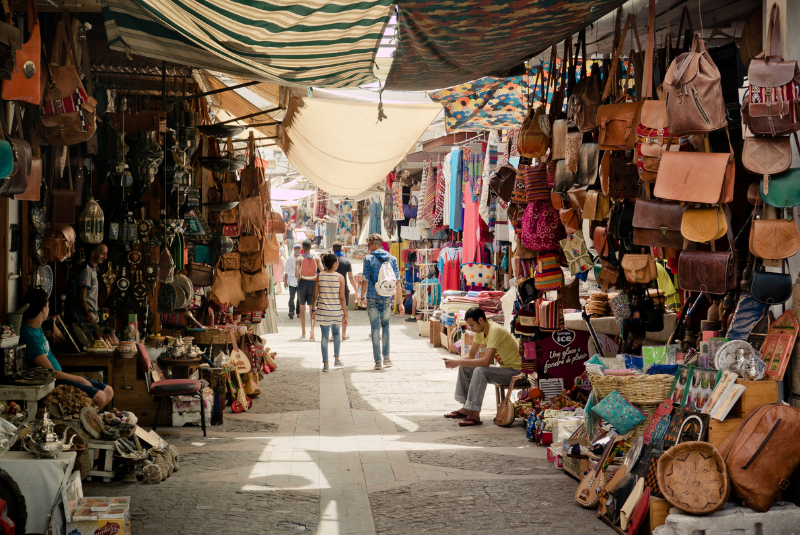
Traditional Arabic souks sit alongside contemporary skyscrapers in modern-day UAE
47. Emirati chefs rising internationally
Though it’s known for hosting restaurants from the world’s biggest culinary names like Gordon Ramsay, Mauro Colagreco, Yannick Alleno and Nobu Matsuhisa, some Emiratis are taking their homegrown brands international. One example is food entrepreneur Shayma Fawwaz, who opened the famous Gossip Café. In 2017, she opened her MlkCake by Gossip in Covent Garden.
48. Expats can now own 100% of their business
In a bid to open up the commercial landscape to more expats, the UAE government passed a raft of radical new laws in 2020 that allow foreigners to own 100% of their business. Previously a local sponsor was required by law to own at least some part of a business in order for it to operate in the country.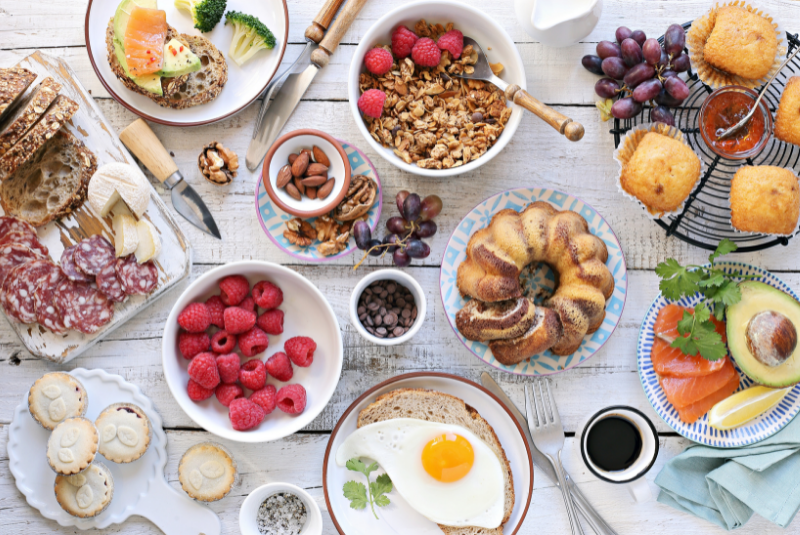
With the large population of Western expats living in the UAE, brunch has become a popular, sociable meal
49. Brunch is an expat institution
The shifted working week has been warmly greeted by the Western expat community. But one institution that reigned supreme was Friday brunch. Hotels across the UAE lay out an indulgent brunch with all-you-can-eat buffets, table service and flowing drinks. Though the brunch scene has shifted to Saturdays, it doesn’t have the same enigmatic allure and reckless abandon that an expat feels when, having previously gotten used to working on Fridays, he or she is permitted the guilt-free luxury of brunching at noon on a 'weekday'.
50. MENA’s 50 Best Restaurants marks a milestone in UAE gastronomy
Thanks to the announcement of the inaugural list of Middle East & North Africa’s 50 Best Restaurants, sponsored by S.Pellegrino & Acqua Panna, in 2022, the UAE capital is quickly becoming the key destination for international travellers who want to get to the heart of the region’s culinary scene. Showcasing the region’s finest restaurants to global gastronauts, the next MENA’s 50 Best Restaurants gala event will take place in Abu Dhabi on Monday 30th January 2023. 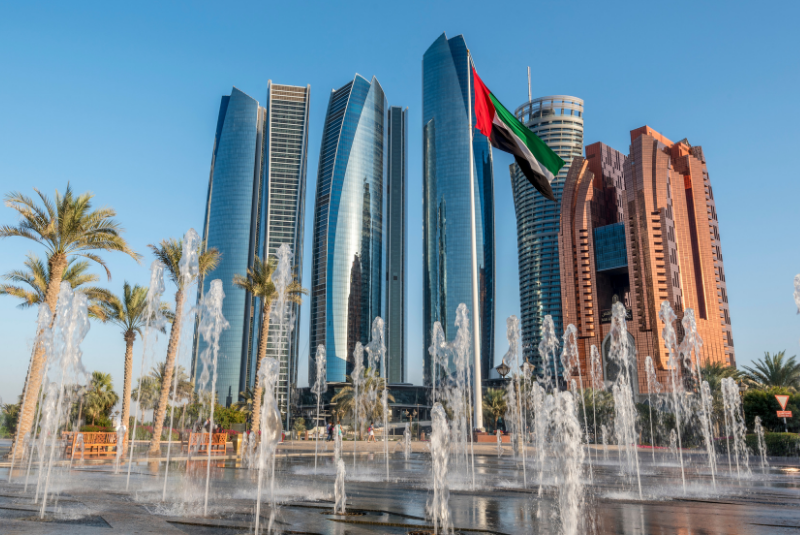
Excited to attend the events in Abu Dhabi? Full details – including dates, timings, exact locations and ticket prices, as well as other participating chefs – will be announced in the coming weeks. Meanwhile, visit the MENA’s 50 Best Restaurants website to discover how the list is being created and join the community on Instagram, Facebook, Twitter and YouTube to be the first to hear about the latest news and announcements.
